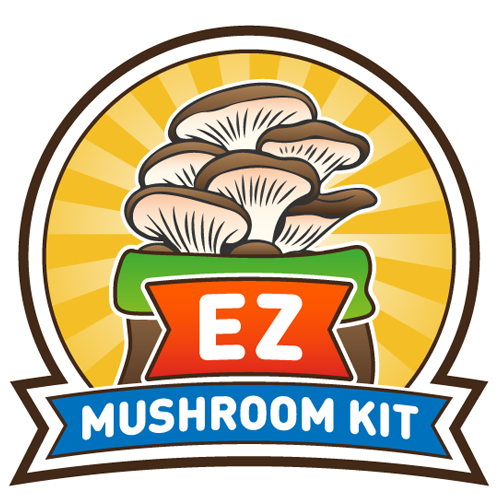Grow Your Own Mushrooms with Ease: The Ultimate Guide to Mushroom Grow Kits
Introduction
Mushrooms are a delicious and nutritious addition to any meal, but they can be expensive to buy at the grocery store. Growing your own mushrooms is a cost-effective and rewarding way to enjoy this versatile ingredient. In this article, we will explore the benefits of growing your own mushrooms, the different types of mushroom grow kits available, and how to choose and set up a kit. We will also provide tips for caring for your kit, harvesting your mushrooms, cooking with them, and troubleshooting common problems.
Introduction to Mushroom Grow Kits
Mushroom grow kits are a convenient and easy way to grow your own mushrooms at home. They typically include everything you need to get started, including spores or spawn, substrate (the material on which the mushrooms grow), and instructions. The kits work by creating an environment that is conducive to mushroom growth, with the right temperature, humidity, and light conditions.
One of the advantages of using a mushroom grow kit is that it eliminates the need for specialized equipment or knowledge. You don’t need a greenhouse or a degree in mycology to grow mushrooms at home. The kits are designed for beginners and can be used in small spaces like apartments or balconies.
Benefits of Growing Your Own Mushrooms
There are many benefits to growing your own mushrooms beyond the cost savings. Mushrooms are a low-calorie food that is high in protein, fiber, vitamins, and minerals. They have been shown to boost immunity, reduce inflammation, and improve brain function. By growing your own mushrooms, you can ensure that they are fresh and free from pesticides or other contaminants.
Growing your own mushrooms is also environmentally friendly. Mushrooms are one of the few foods that can be grown without soil or fertilizer. They can be grown on waste materials like coffee grounds or sawdust, reducing waste and carbon emissions.
Types of Mushroom Grow Kits Available
There are two main types of mushroom grow kits: pre-made kits and DIY kits. Pre-made kits come with everything you need to get started, including spores or spawn, substrate, and instructions. DIY kits require you to purchase the spores or spawn separately and prepare the substrate yourself.
There are many different types of mushrooms that can be grown using a kit, including oyster mushrooms, shiitake mushrooms, and button mushrooms. Each type requires different growing conditions and substrates.
Choosing the Right Mushroom Grow Kit for You
When choosing a mushroom grow kit, there are several factors to consider. These include the type of mushroom you want to grow, the size of the kit, and your level of experience. At EZMushroomKit.com we only sell kits created from top farms with real commercial experience and customers. This way you can be assured of the top quality of our kits.
Once you have chosen a mushroom grow kit, it’s time to set it up. Follow the instructions carefully and make sure you have all the required materials and tools on hand. This may include gloves, a spray bottle for misting, and a thermometer.
The setup process will vary depending on the type of kit you have chosen and the type of mushroom you are growing. Generally speaking, you will need to prepare the substrate by soaking it in water or boiling it before adding the spores or spawn.
Caring for Your Mushroom Grow Kit
Caring for your mushroom grow kit involves maintaining the right temperature and humidity levels, watering and misting as needed, and preventing contamination from bacteria or mold. This may involve covering the kit with plastic wrap or a lid to keep out unwanted organisms.
It’s important to monitor your kit regularly for signs of growth or problems like discoloration or foul odors. If you notice any issues, consult the instructions or contact customer support for advice.
Harvesting Your Mushrooms
Once your mushrooms have reached maturity, it’s time to harvest them. This typically involves gently twisting or cutting them off at the base of the stem. Be sure to harvest them before they start to release spores or become too mature.
After harvesting your mushrooms, store them in a paper bag or container in the refrigerator for up to a week. You can also preserve them by drying or freezing them.
Cooking with Your Homegrown Mushrooms
Cooking with homegrown mushrooms is a great way to showcase their flavor and nutritional value. Mushrooms can be sautéed, roasted, grilled, or used in soups and stews. They pair well with herbs like thyme and rosemary as well as other ingredients like garlic and onions.
Mushrooms are also low in calories and high in fiber, making them a great addition to any diet. They contain antioxidants that help protect against disease as well as B vitamins that support energy production.
Troubleshooting Common Mushroom Growing Problems
Despite their many benefits, growing mushrooms can sometimes be challenging due to issues like contamination or poor growth rates. Common problems include mold growth on the substrate or fruiting bodies that fail to develop properly.
To prevent these issues from occurring, it’s important to follow proper hygiene practices when handling your kit and maintain optimal growing conditions as much as possible.
Conclusion and Final Thoughts on Mushroom Grow Kits
Growing your own mushrooms is an enjoyable hobby that can provide many benefits beyond just saving money on groceries. With the right mushroom grow kit and some basic knowledge about mushroom cultivation, anyone can enjoy fresh homegrown mushrooms year-round.
Whether you’re interested in trying out a pre-made kit or creating your own DIY setup from scratch, there are many options available for growers of all levels of experience. So why not give it a try? You might just discover a new favorite hobby – not to mention some delicious new recipes!
